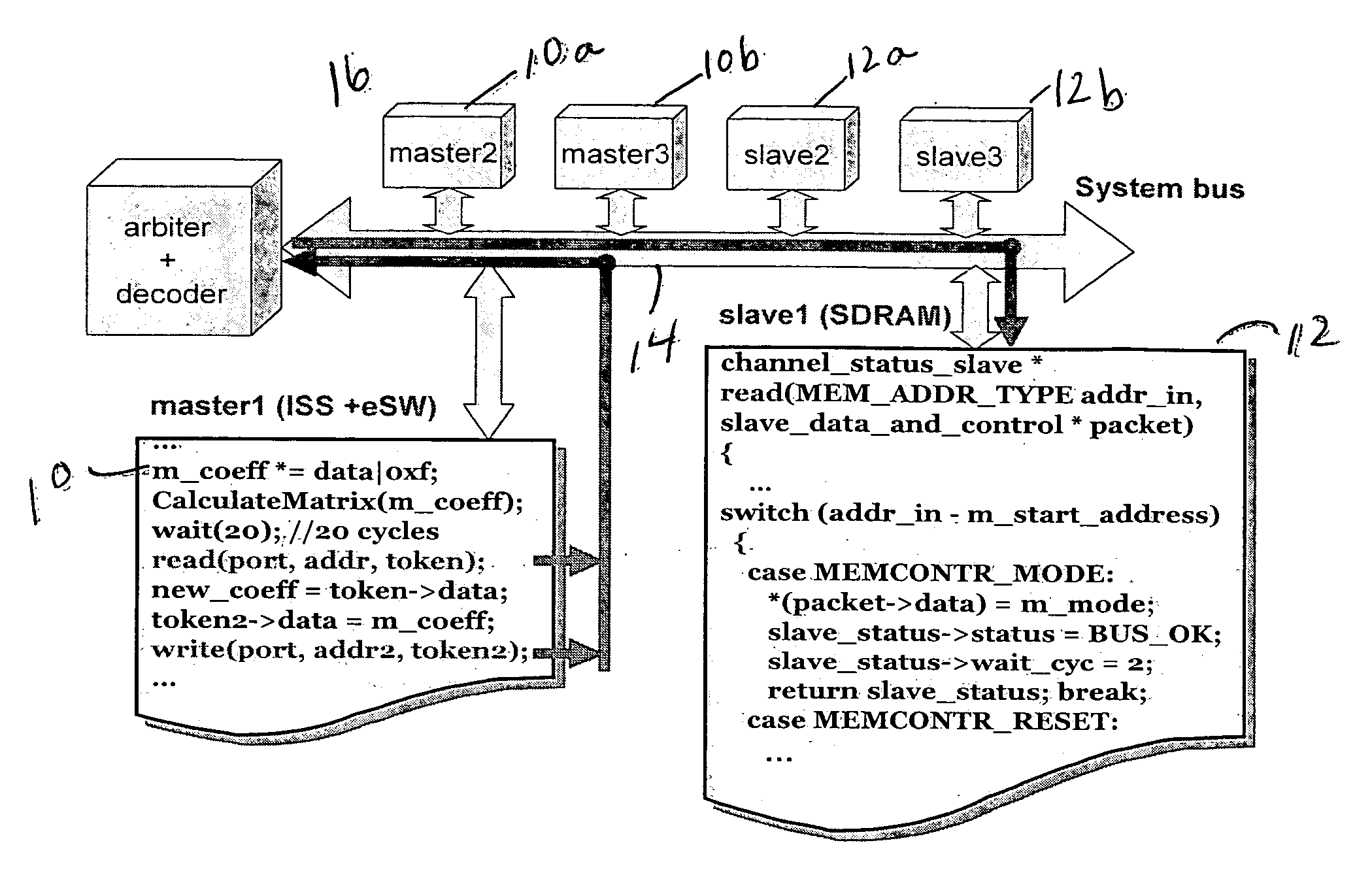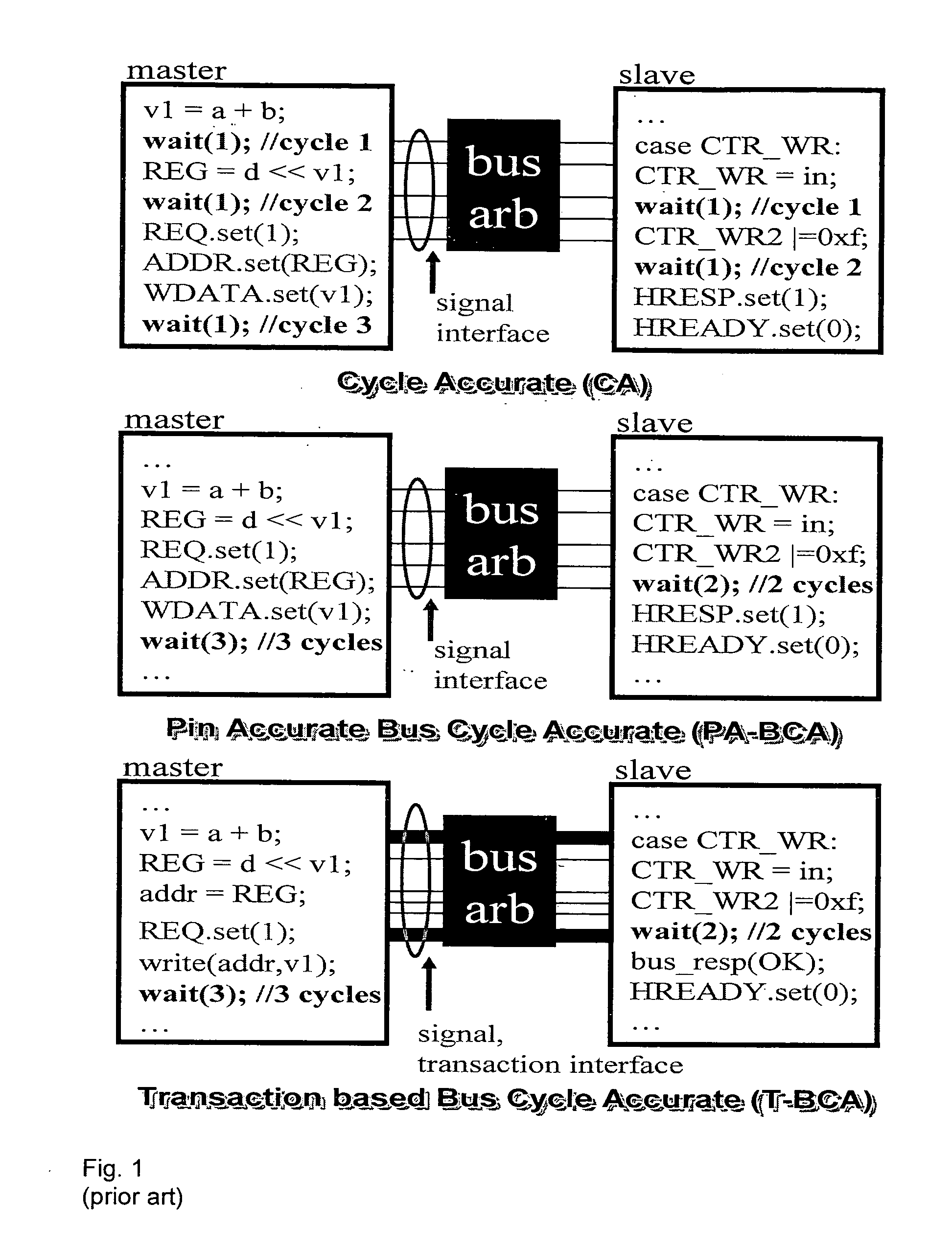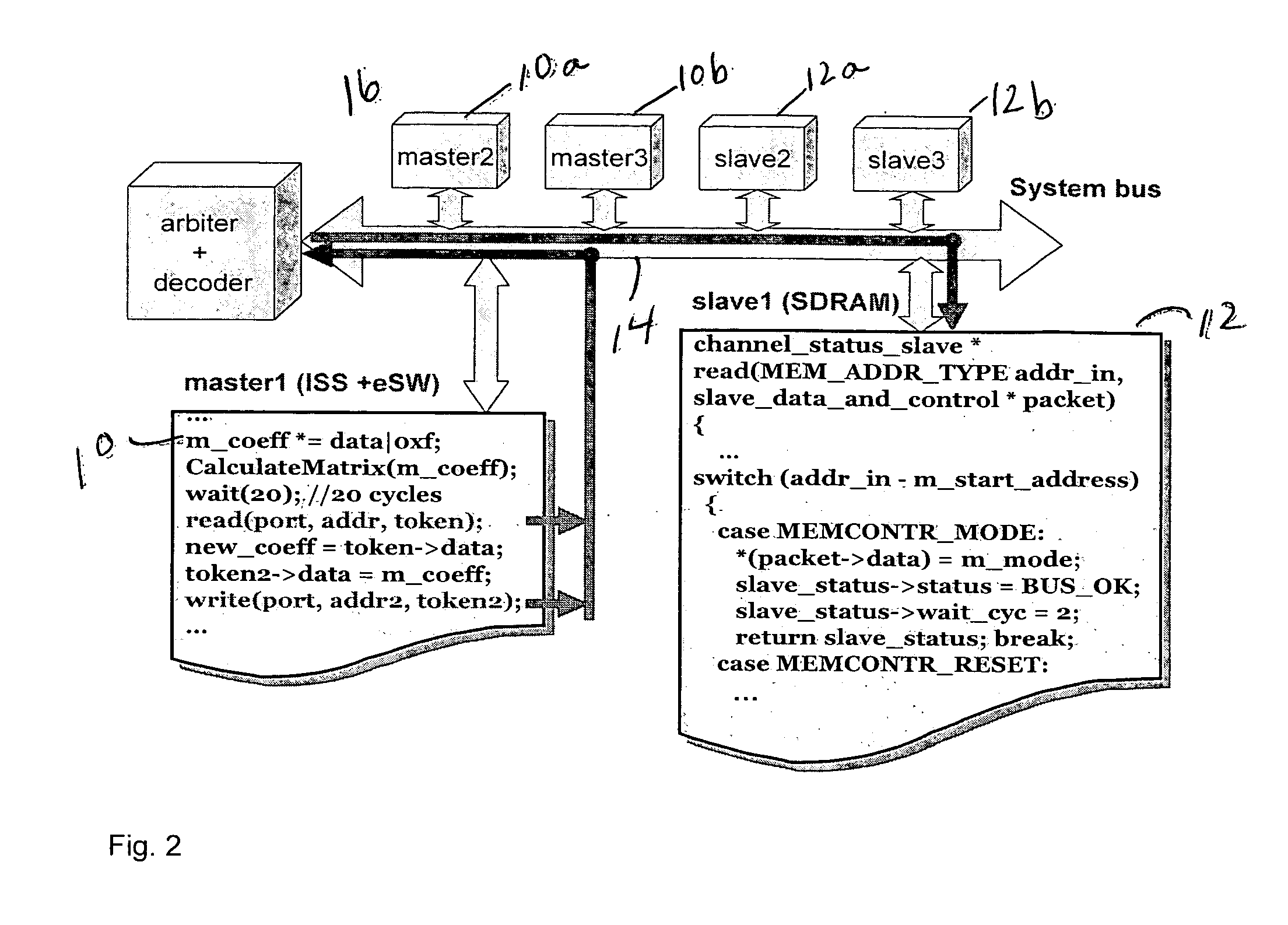Method for the fast exploration of bus-based communication architectures at the cycle-count-accurate-at-transaction -boundaries (CCATB) abstraction
a communication architecture and abstraction level technology, applied in the field of computer design, can solve the problems of slow simulation speed of complex designs, performance bottlenecks, and increasing complexity of system-on-chip (soc) designs, and achieve the effect of fast transaction-based modeling abstraction level (ccatb), ensuring cycle count accuracy, and speeding up system prototyping and production
- Summary
- Abstract
- Description
- Claims
- Application Information
AI Technical Summary
Benefits of technology
Problems solved by technology
Method used
Image
Examples
Embodiment Construction
Requirements for Communication Space Exploration
[0061] First consider some of the requirements for communication space exploration. After system designers have performed hardware / software partitioning and architecture mapping in a typical design flow, they need to select a communication architecture for the design. The selection is complicated by the plethora of choices with which a designer is confronted. Factors such as application domain specific communication requirements and reuse of the existing design intellectual property (IP) library play a major role in this selection process.
[0062] Once a choice of communication architecture is made, the next challenge is to configure the architecture to meet design performance requirements. Bus-based communication architectures such as AMBA have several parameters which can be configured to improve performance: bus topology, data bus width, arbitration protocols, direct memory access (DMA) burst lengths and buffer sizes have significa...
PUM
 Login to View More
Login to View More Abstract
Description
Claims
Application Information
 Login to View More
Login to View More - R&D
- Intellectual Property
- Life Sciences
- Materials
- Tech Scout
- Unparalleled Data Quality
- Higher Quality Content
- 60% Fewer Hallucinations
Browse by: Latest US Patents, China's latest patents, Technical Efficacy Thesaurus, Application Domain, Technology Topic, Popular Technical Reports.
© 2025 PatSnap. All rights reserved.Legal|Privacy policy|Modern Slavery Act Transparency Statement|Sitemap|About US| Contact US: help@patsnap.com



